King Ink
It’s Inktober!
Inktober is an art challenge with daily prompts for every day in October. The goal is to encourage people to post one #ink drawing every day! Every October all of social media gets flooded with #Inktober drawings & paintings. There is also a version that lasts all year – #Inktober52 – with a different prompt each week. Don’t like the official prompts? That’s OK, there are dozens if not hundreds of unofficial #Inktober lists out there! I have been sharing my art online for just over a year, so Inktober is the only annual art challenge I’ve had a chance to participate in more than once. I realized today that I haven’t ever looked into the history of ink, so I’m going to tumble down this rabbit hole & I’m taking you all with me.
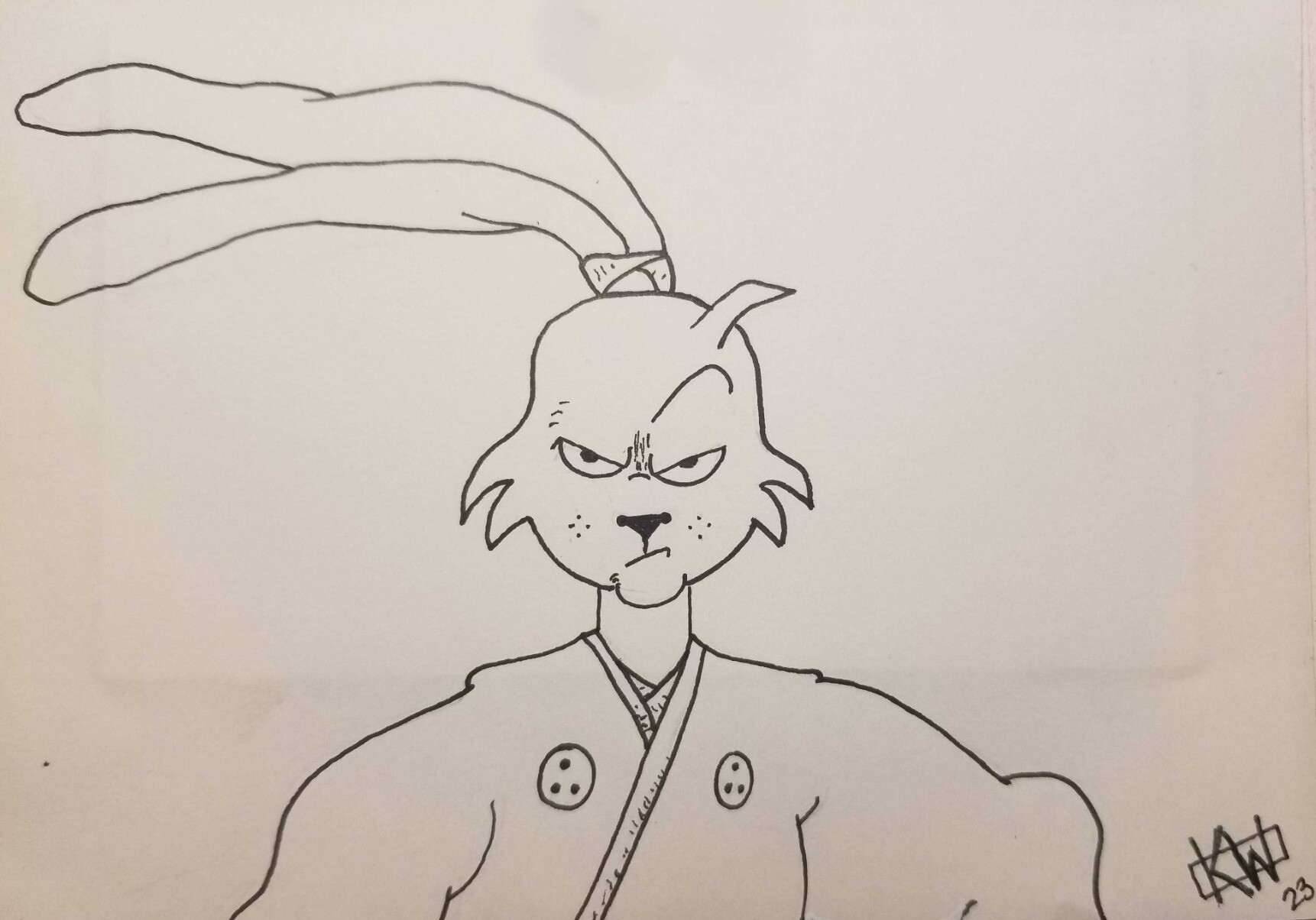 Micron Pen Ink
Micron Pen Ink
What Is Ink? When Did Ink Start?
Writing is a concept that has fascinated humans. Around age three most children start to understand the distinction between writing & drawing. Children who have not yet learned to write will often make scribbles lined up horizontally or vertically, with left or right alignment, according to whatever style of text they have been exposed to the most. Is it any wonder that a medium that we invented to write with should be equally fascinating?
Ink has existed for at least 4,500 years. People in China & Egypt are both credited with discovering ink at the same time. This is called Simultaneous Invention, & it happened with the wheel, too. I have to say ink is “at least” 4,500 years old because there is some debate over when people started using ‘ink’ as opposed to ‘paint’. The debate rages on in large part because of a simultaneous debate over where the line is drawn between what is ink & what is paint.
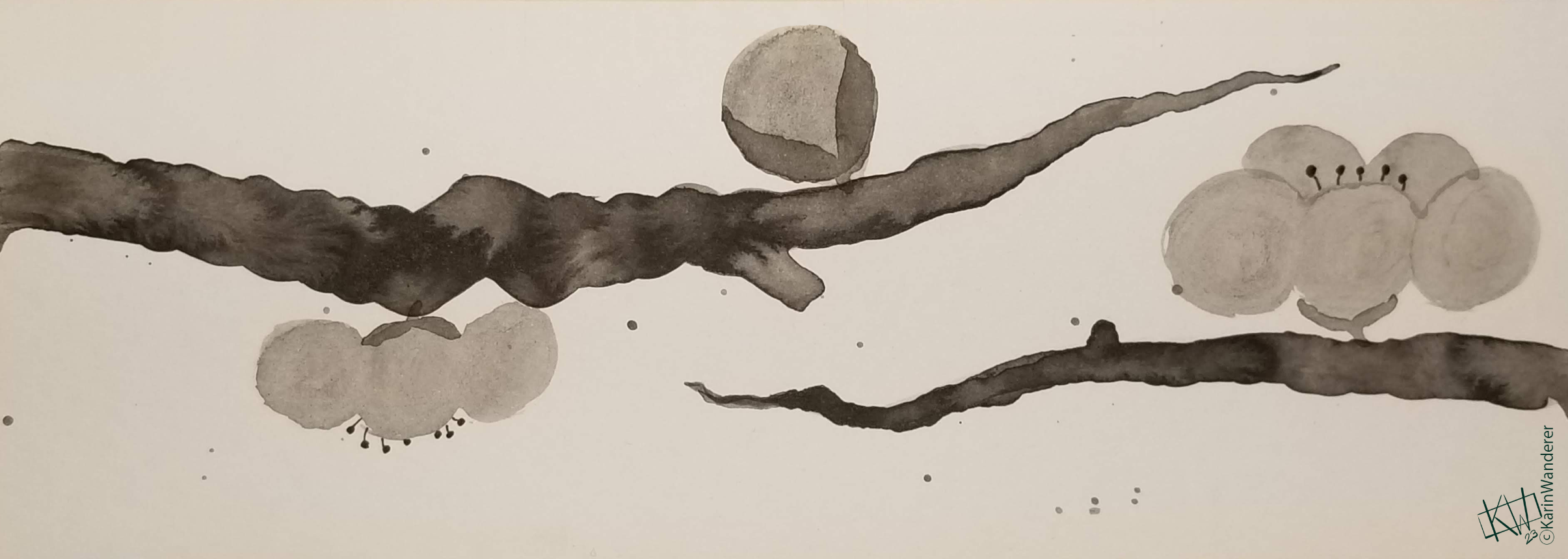 Sumi Ink depicting the Plum Tree, a very popular sumi-e subject.
Sumi Ink depicting the Plum Tree, a very popular sumi-e subject.
What Makes It Ink, Not Paint?
There are many different kinds of ink, & many kinds of paint. Sometimes the only difference is that you use paint to cover a wall, & ink to write a letter. Most of the differences can only be discussed as generalities. Paint is usually more lightfast, whereas ink is generally a “fugitive” pigment unless it is designed to be long-lasting. Ink generally has the consistency of water, while paint is often thicker. Paint often changes the texture of any surface it covers, but ink usually doesn’t. Natural inks mostly come in blacks & browns, whereas natural paints come in a rainbow of colors. In short: you could apply most ink with a paintbrush, but most paint could not be applied with a fountain pen. This is because inks are made with very small pigment particles that dissolve easily, while paints often use larger particles that may dry with a slightly grainy look.
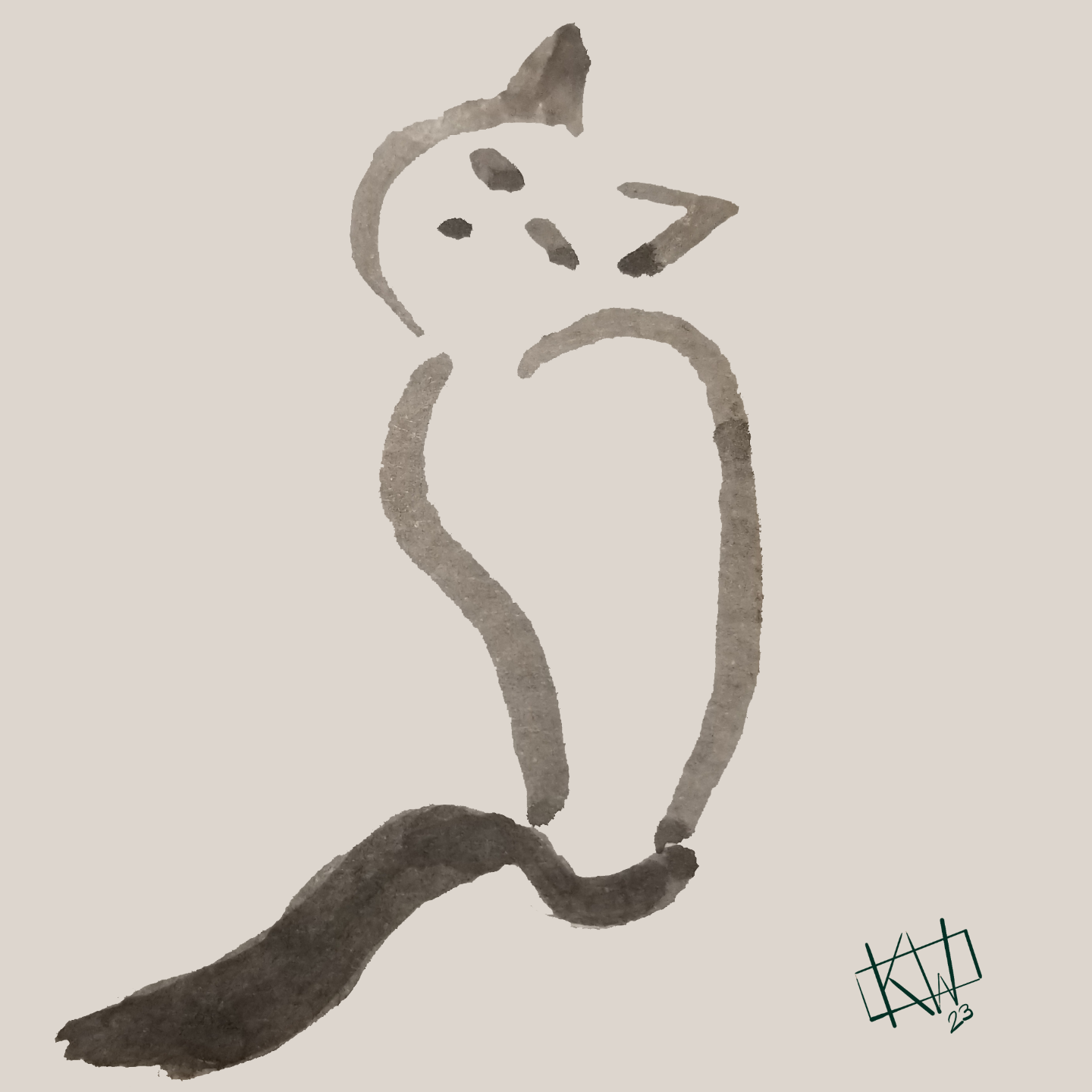 Sumi Ink depicting a cat, a very popular subject in every form of art.
Sumi Ink depicting a cat, a very popular subject in every form of art.
There Are Many Many Many Types Of Ink
The earliest inks got their color from a variety of natural materials. Egyptians used inks to write on papyrus. Those inks were made of ingredients such as ochers, which are also the colorants used in some of the earliest paints. Many inks, such as India Ink (which is actually Chinese) & Sumi (Japanese), are colored by soot. Whether the ink is a cool black or a warm black depends on what is burned to produce the soot & what the soot is mixed with to make it into ink. There was also cephalopod ink which dries to a shade of brown called ‘sepia’, because of the Latin name for the cuttlefish: sepia officinalis. Other inks were made from chemical precipitation formed from ingredients like oak galls & iron sulfate. I have made inks from crushed berries & vinegar (pretty successfully) & walnut shells (pretty unsuccessfully). Dyes that work with synthetic inks were discovered by a chemist named William Henry Perkins while he was trying to cure malaria, & now ink comes in any color you like. Even today, though, many inks are made with animal-based glue & other non-vegan ingredients, so if this is important to you it is something you must be very careful about!
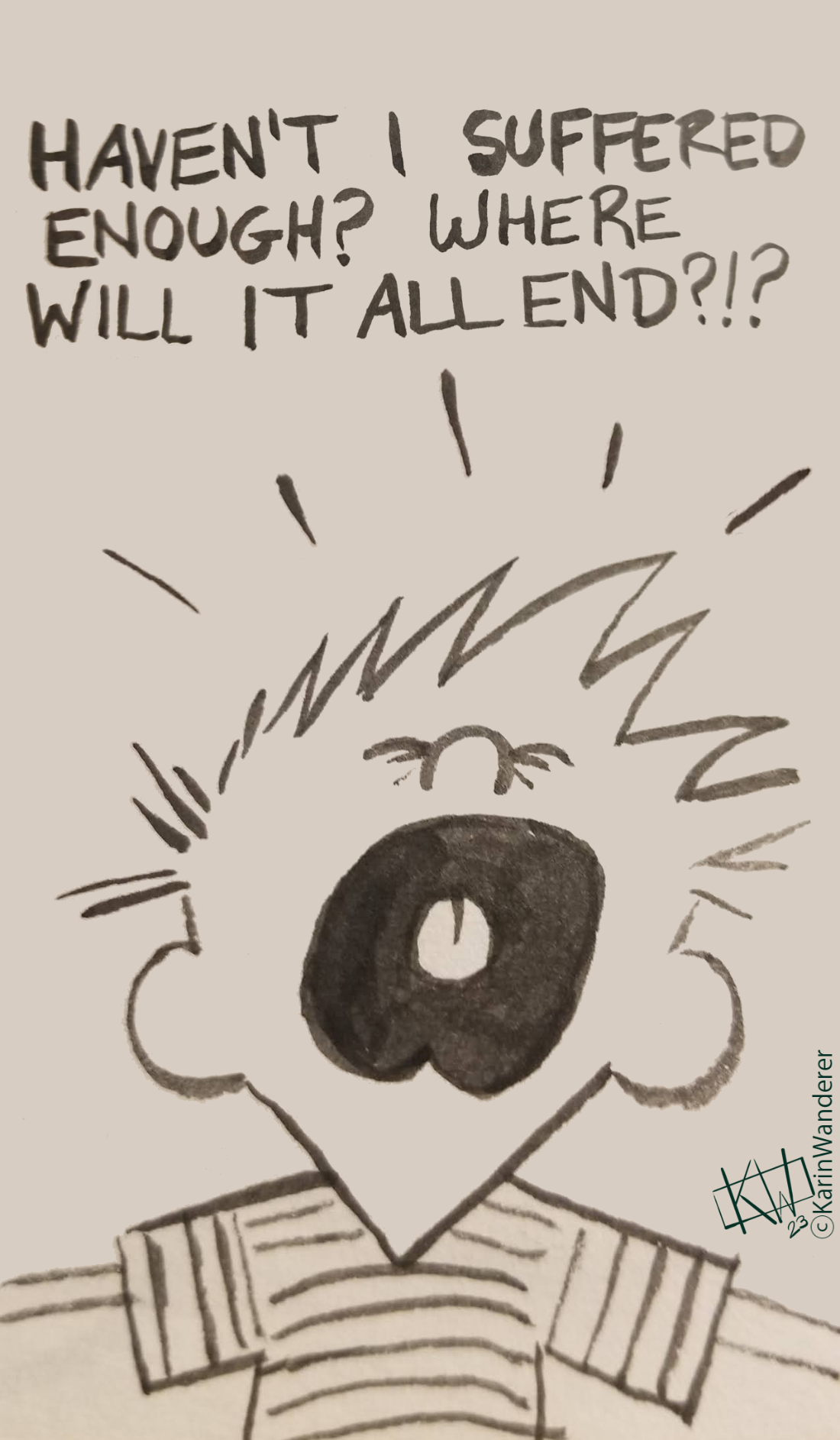
Which Ink Is Best?
Some artists remain devoted to one type of ink, or have different types designated for different jobs. Some artists have a more free-for-all approach. Bill Watterson, of Calvin & Hobbes fame, uses India ink & watercolors. Stan Sakai, creator of Usagi Yojimbo, uses Sumi & watercolors. Suisen Nakatani, a kokotsu-bun specialist, also works in Sumi. Alphonso Dunn uses an impressive array of inks & pens with his watercolors. Cheriue Ka-wai Cheuk is an expert in the gongbi painting style, which is specific about all the tools an artist uses. The ink an artist works with is a very personal decision.
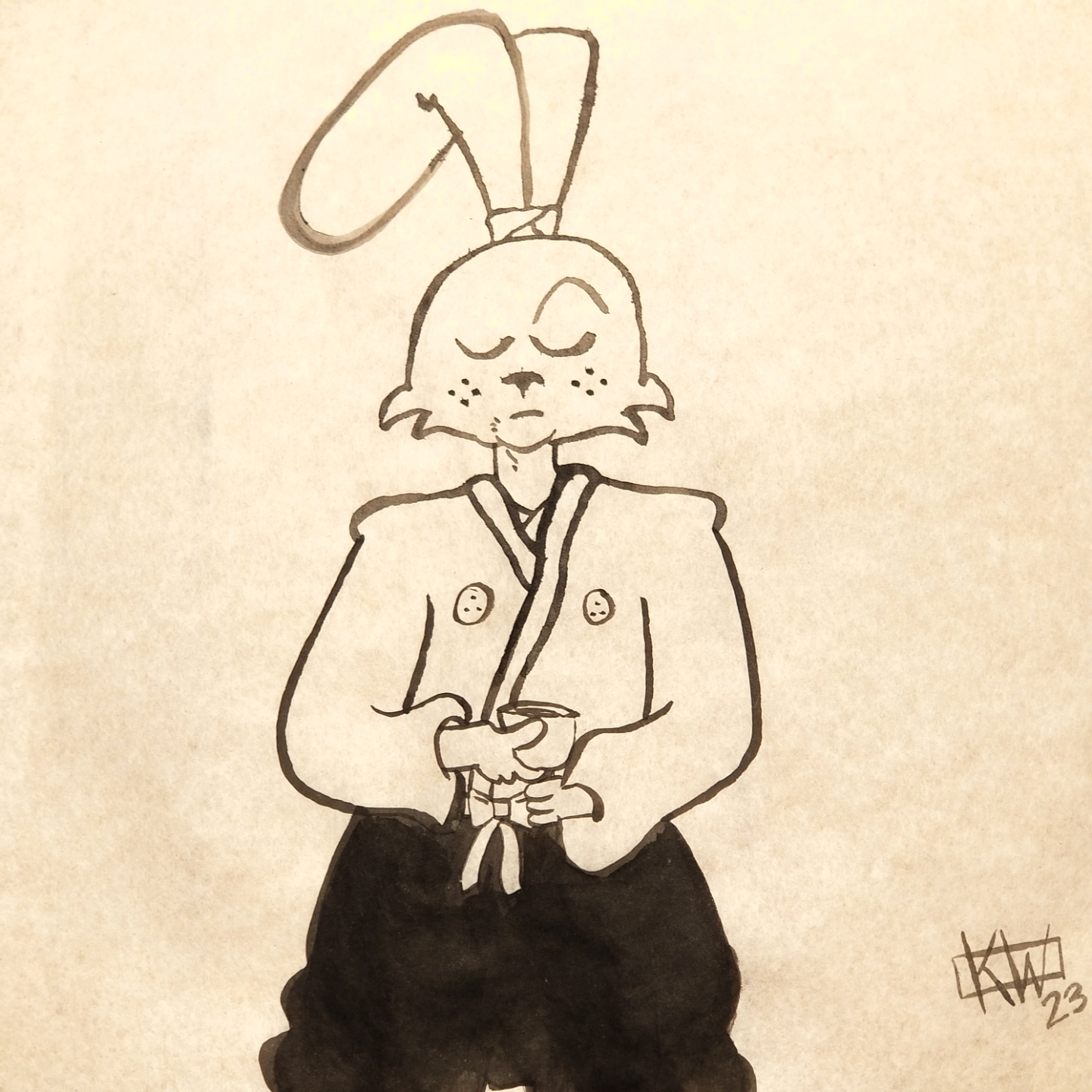 I work with Sumi because I, personally, am a shameless Sakai fangirl.
I work with Sumi because I, personally, am a shameless Sakai fangirl.
What’s your favorite kind of ink? Are you participating in #Inktober? Let me know on Mastodon & Ko-Fi!
Get my art on mugs & vinyl stickers in my Shop!
Donate to support my works & get cool perks on Ko-Fi
Join us for #ArtABCs, a year-long art challenge!
Find me
- All pictures posted are my own work.
- All reviews are my own unpaid & unsolicited opinions.